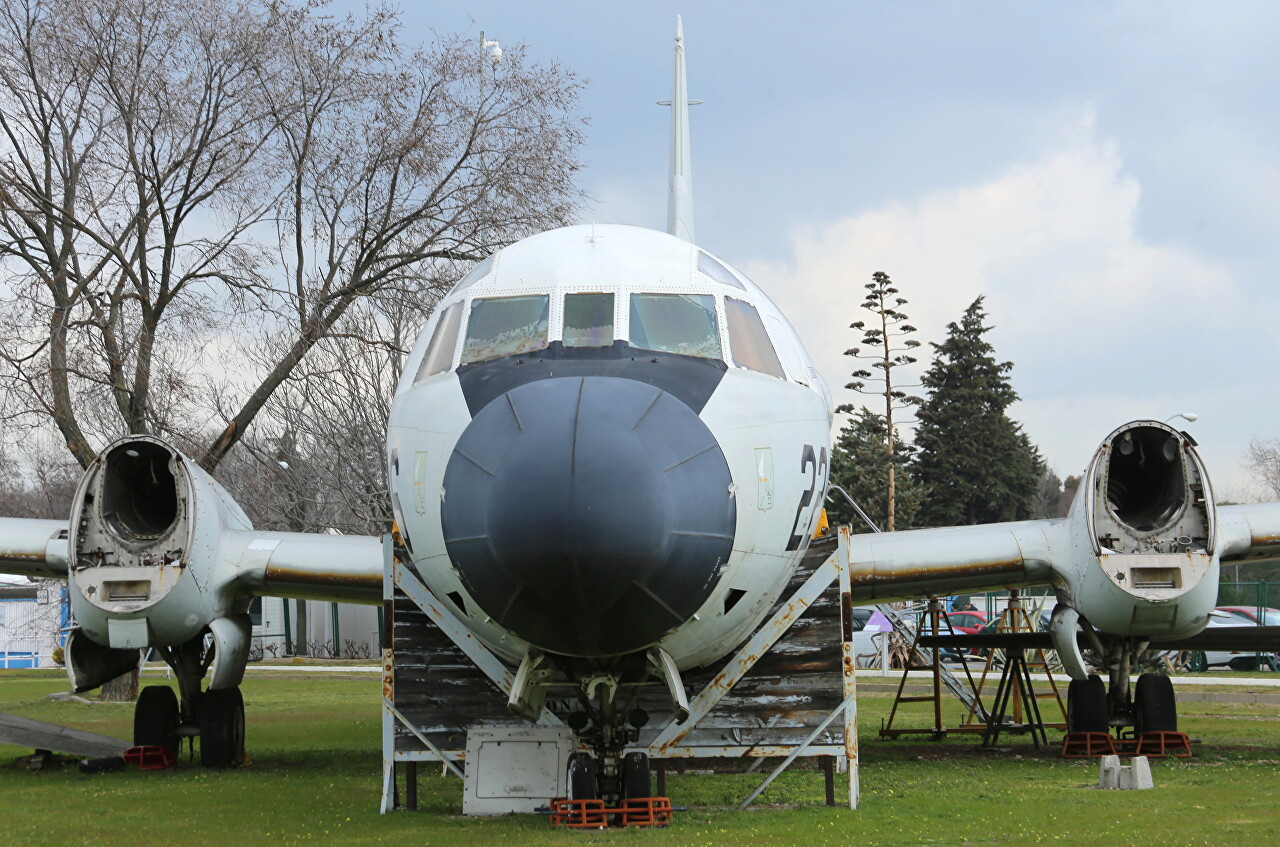Lockheed P-3A Orion Antisubmarine Aircraft (Madrid)
In 1957, the US Navy announced a competition for a modern anti-submarine patrol aircraft to replace the P2V Neptune and P5M Marlin, developed in the mid-forties. The competition was won by Lockheed, which offered to modify the passenger aircraft L-188 Electra for the needs of the air force, which made its first flight in December 1957. The use of an already completed prototype shortened the time of acceptance of a new aircraft, and this became a decisive factor. The naval version of the Electra made its first flight on August 19, 1958, after two years of modifications, mass production began under the name P3V1, and in August 1962, the first aircraft arrived at the naval air stations Jacksonville in Florida and Patuxent River in Maryland. In September of the same year, NATO switched to a single designation system and the aircraft were named P-3 Orion.
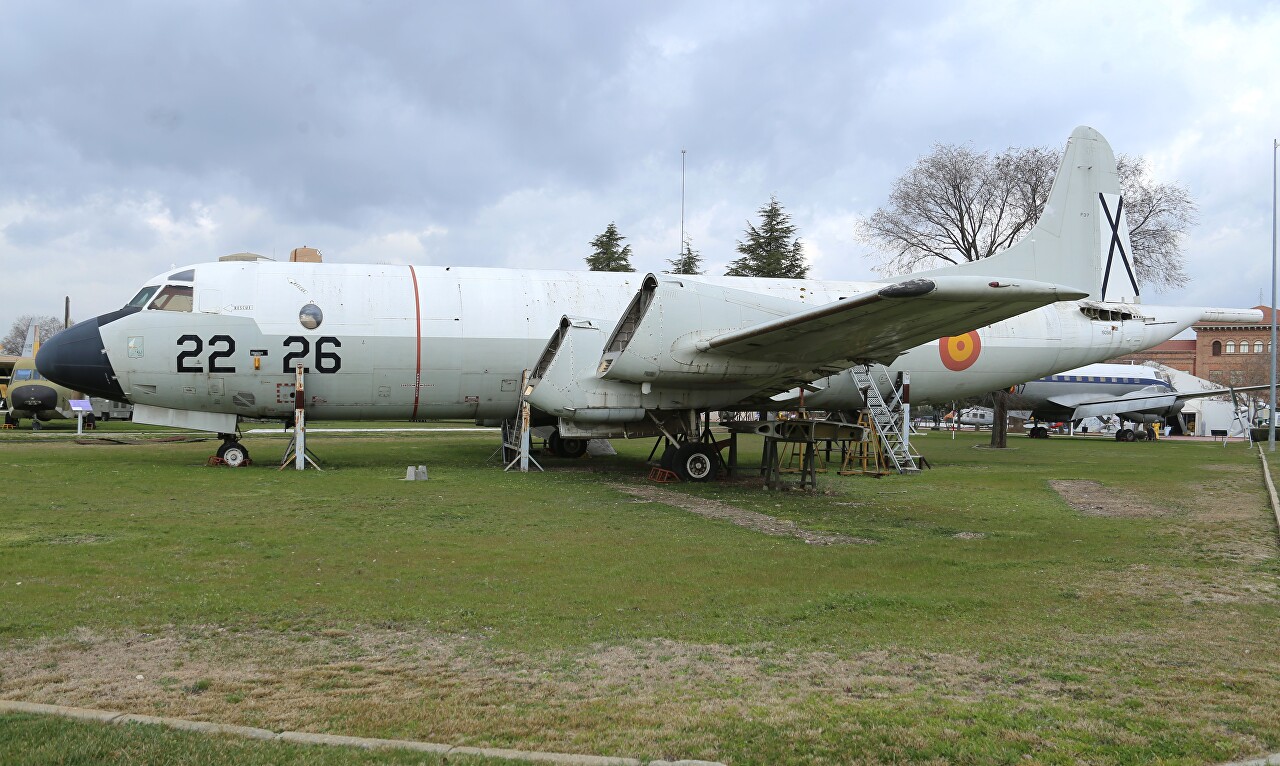
The anti-submarine aircraft differs from the civil model by a shortened fuselage of 2.1 meters, on which there are no Windows, the interior space is divided into a sealed upper part, where the crew and control devices are located, and a lower non-sealed, which houses a weapons compartment for dropping sonar buoys, bombs and torpedoes.
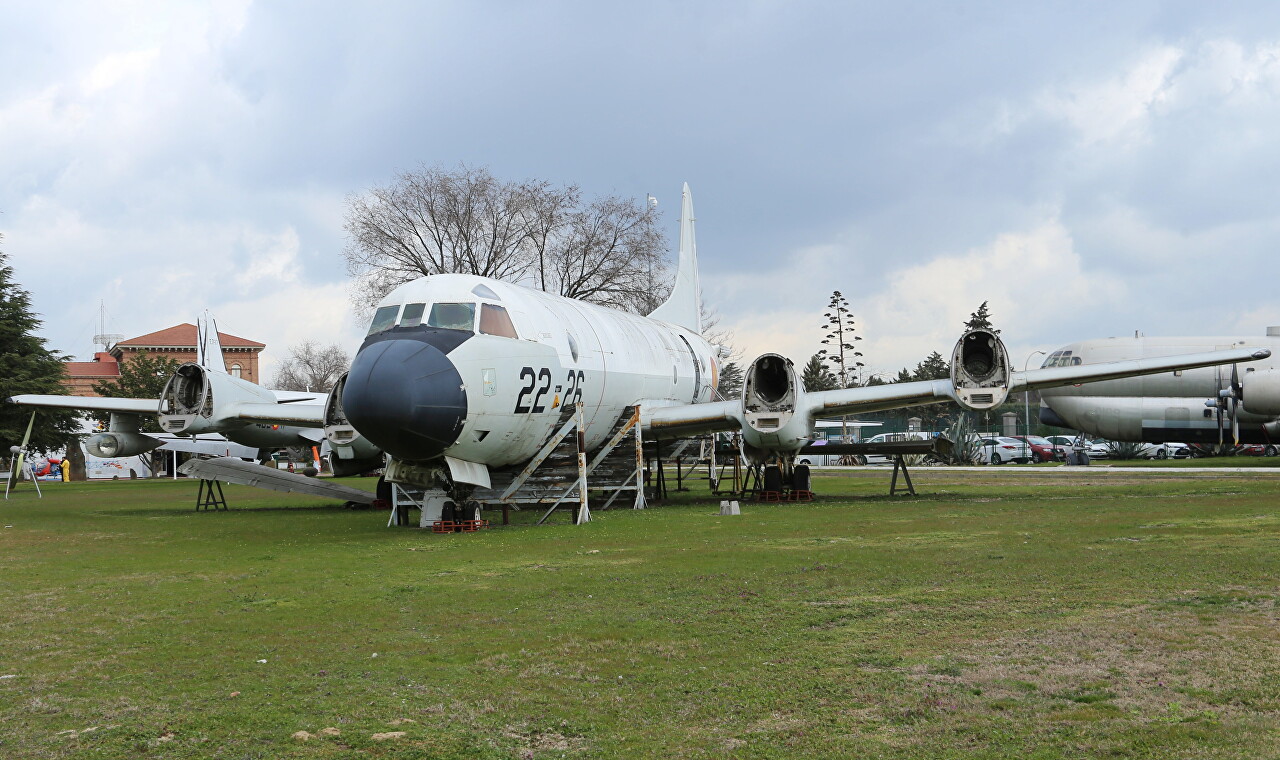
In addition, under each wing there are 5 pylons for external suspension of various weapons, including eating. In particular, on the plane in the Madrid Museum, you can see a powerful electric arc searchlight for the night search for ships and submarines.
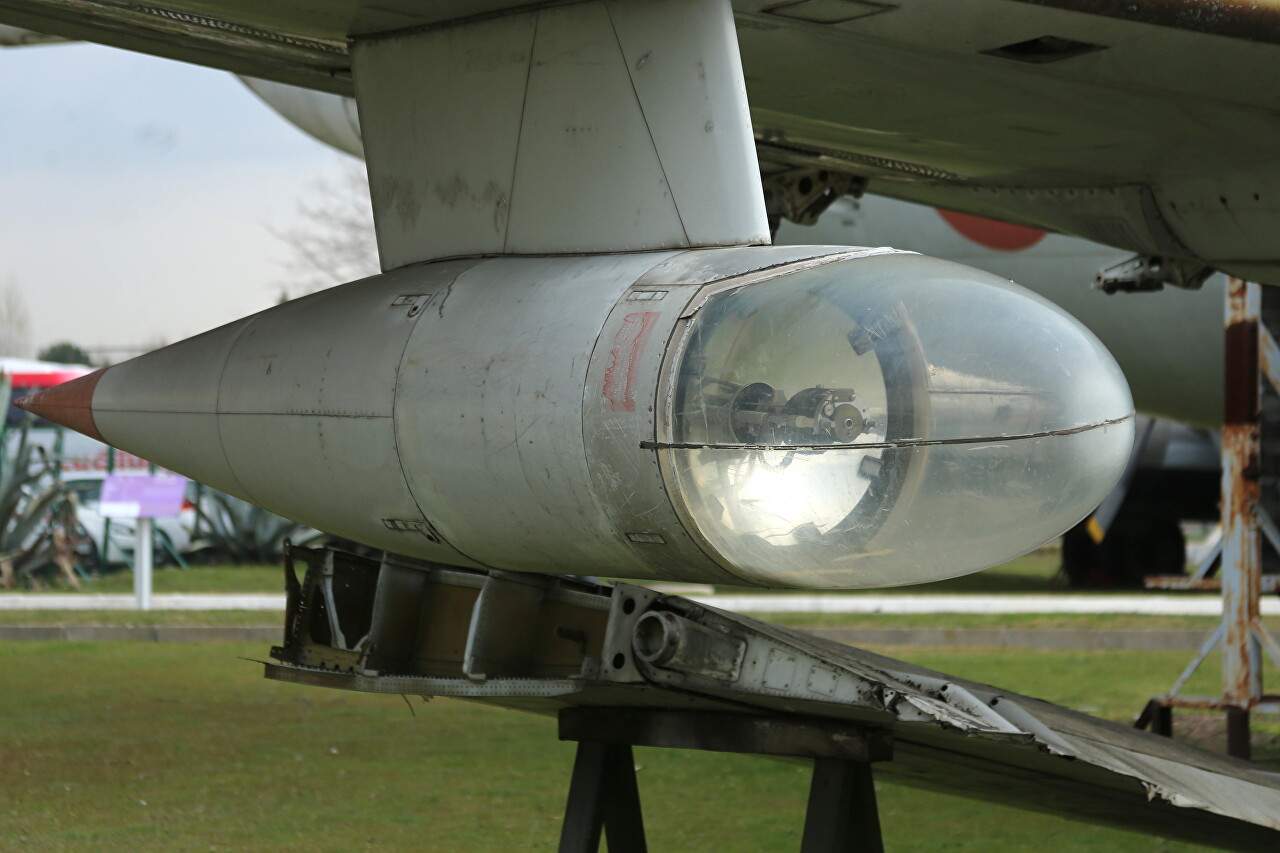
The silhouette of the Orion is clearly recognizable by the fiberglass tail boom, which housed a magnetomeric sensor that can detect metal underwater objects.
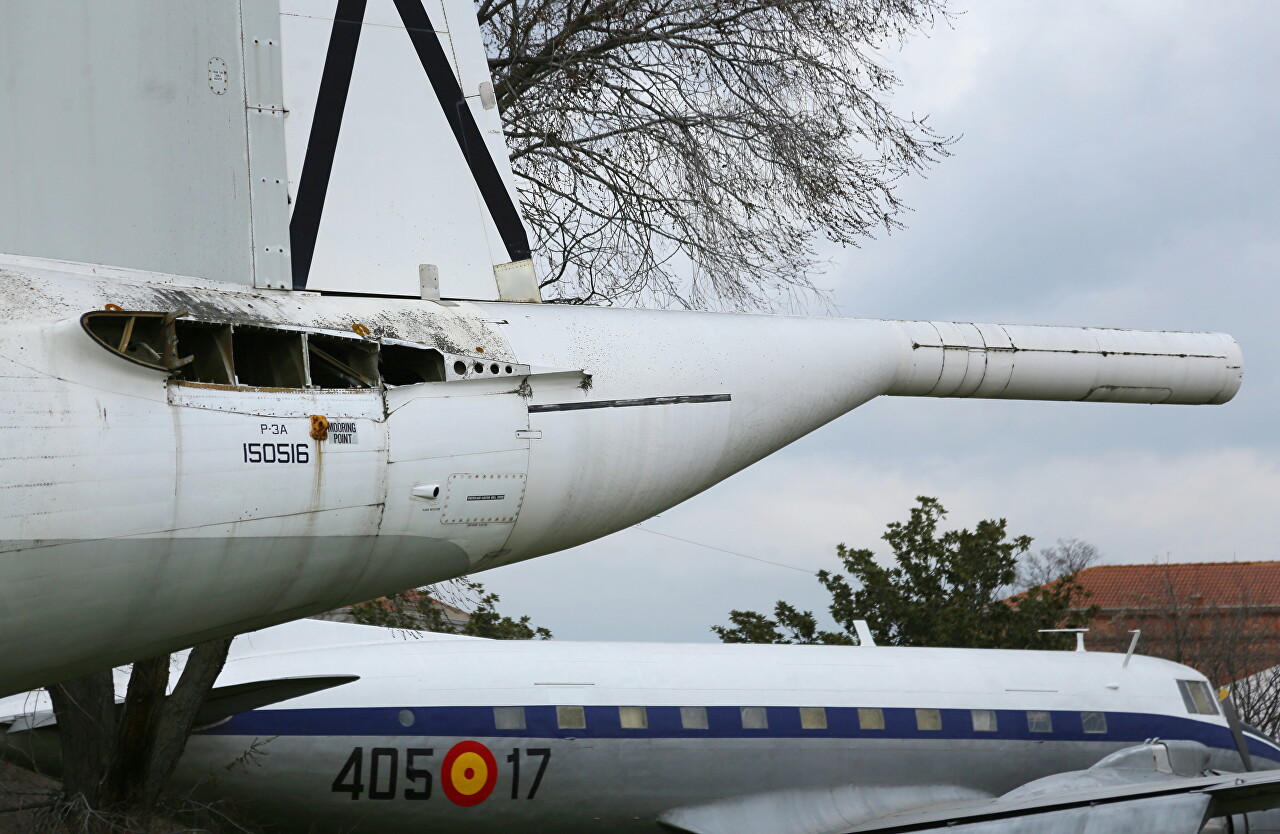
Initially, all information from the sensors was processed by the operators in manual, but in 1963, the US Navy ordered the company Univac digital computing complex for processing data from sonar and magnetometers, with the display of results on monitor screens. In 1965 in the year of the Univac CP-823/U computer, serial aircraft began to be equipped. The digital submarine detection system is called "Delayed Time Compression" (Deltic).
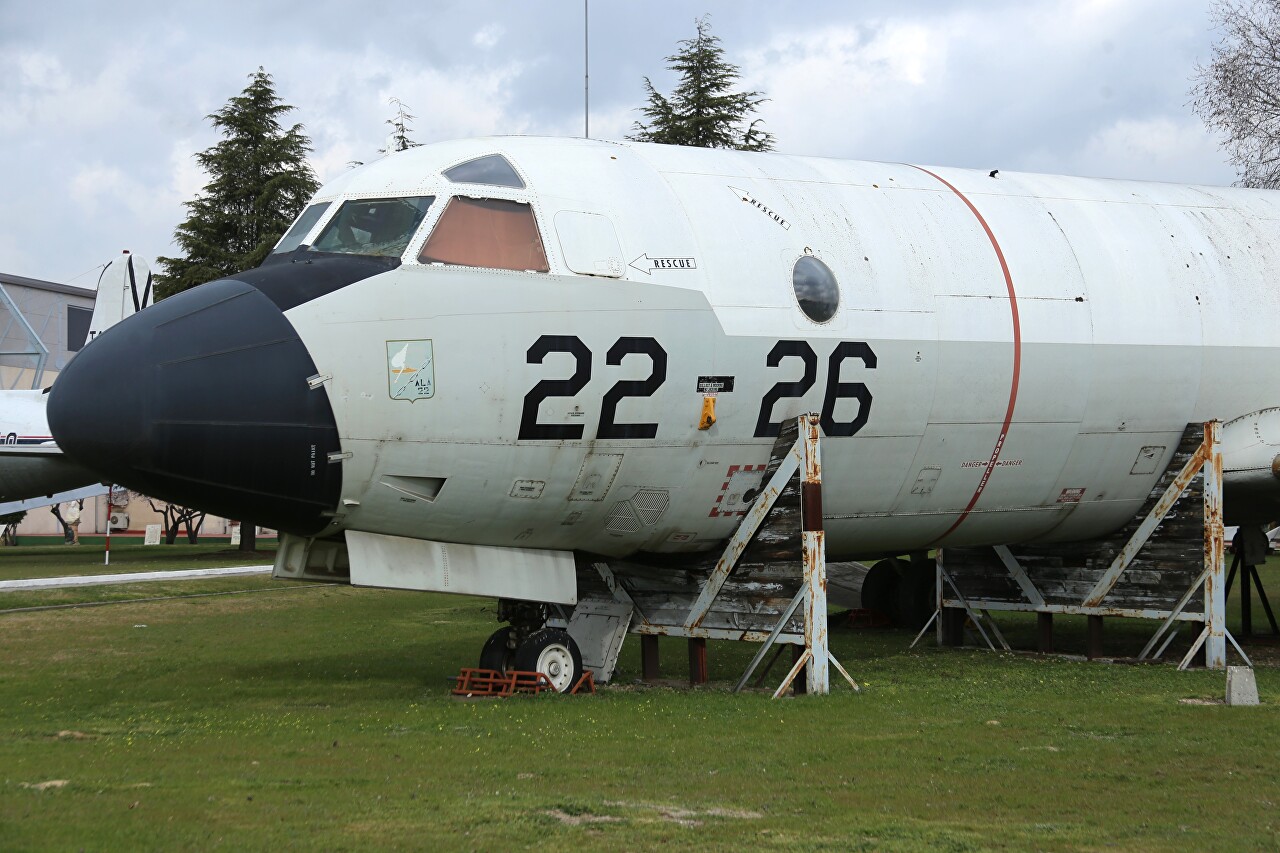
Four Allison T56-A14 turboprop engines with a takeoff power of 4,910 HP each allowed a speed of up to 750 kilometers per hour, the fuel supply was located in four integral wing tanks, one in the fuselage, providing a range of up to 9,000 km.

The chassis is three-post, with two wheels on each rack, the main racks are removed into the engine nacelles of internal engines.
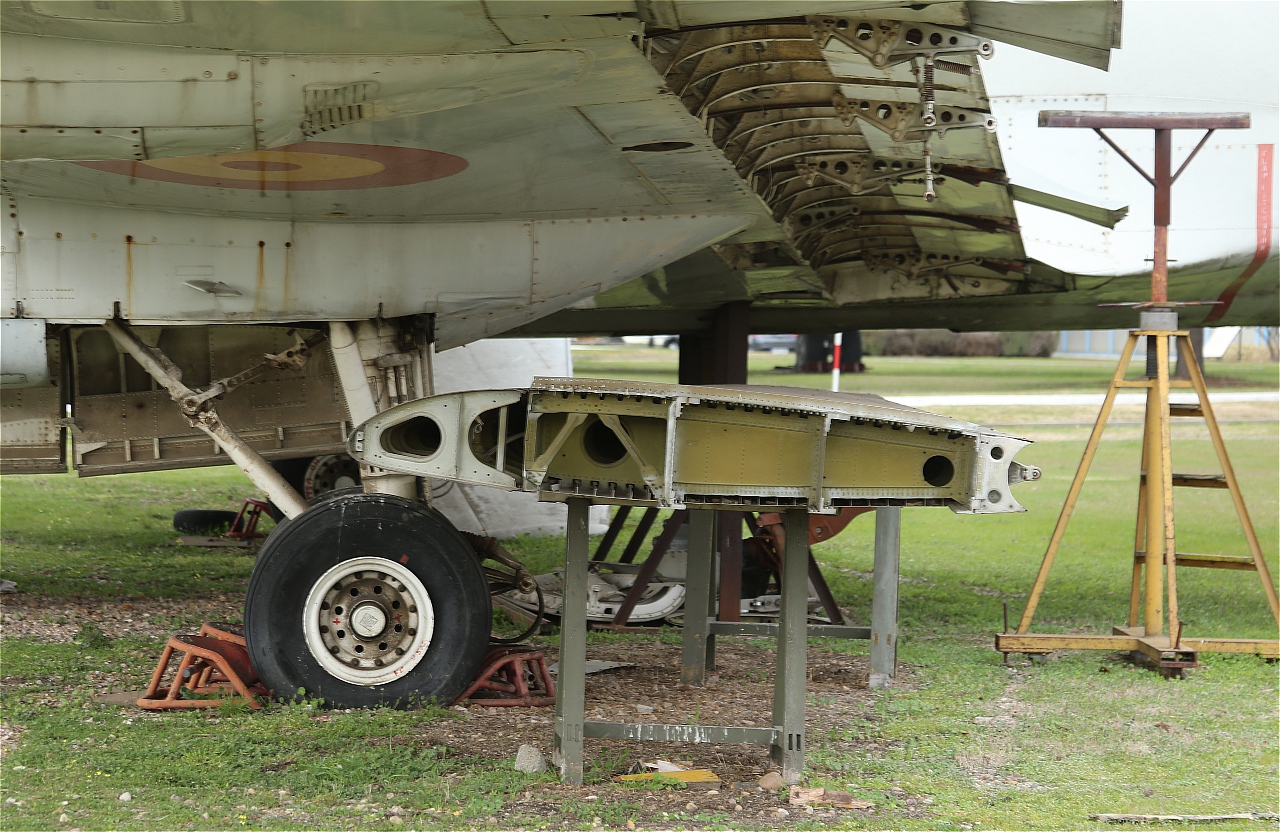
The first three P-3A aircraft entered service with the Spanish air force in 1973, and four more were purchased in 1979, equipped with the Deltic system. in 1989, four more P-3BS were purchased from Norway. The aircraft are based at Morón air base near Seville and in Jerez de La Frontera. In addition to their direct functions, the aircraft are used to control fishing, to prevent smuggling and illegal immigration. Currently in operation are 2 units of p-3A and 5 units of P-3B, the rest are disassembled for spare parts.
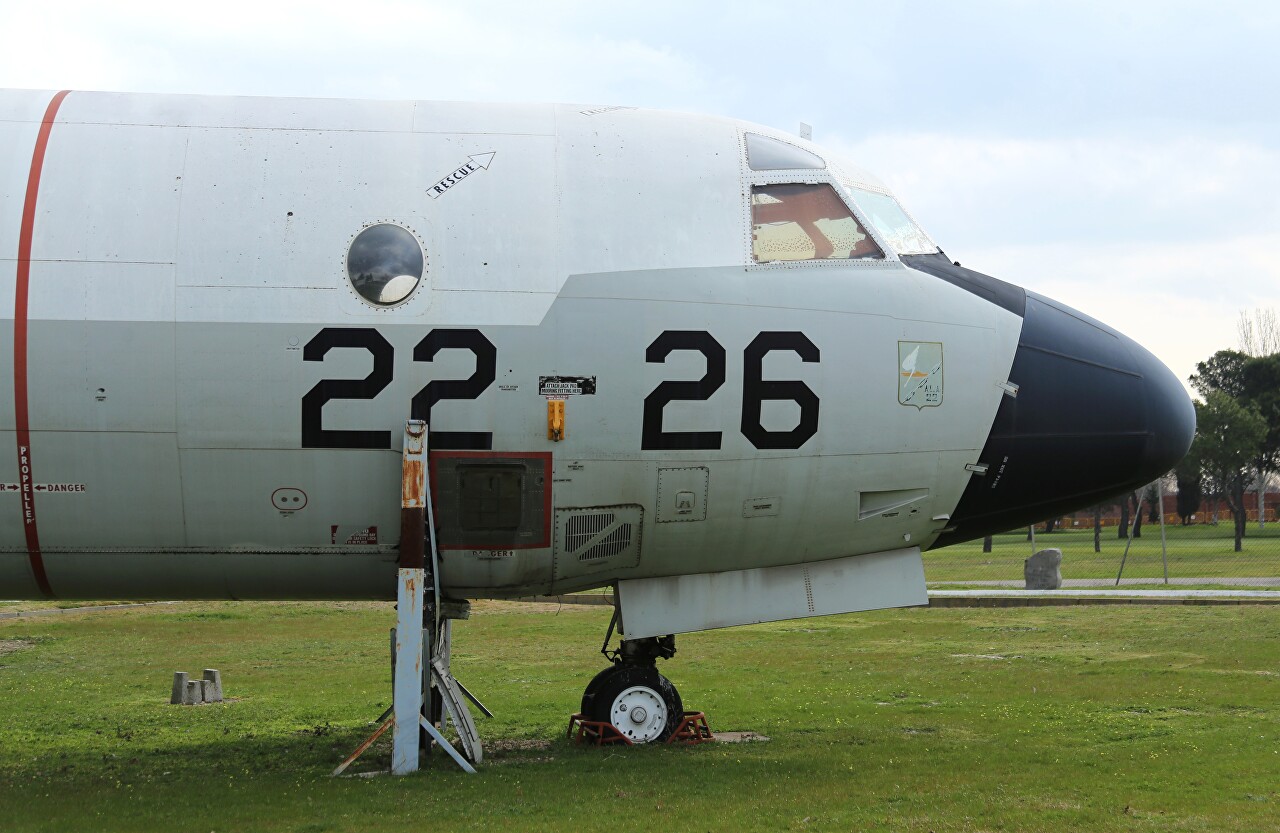
This aircraft modification Deltic was transferred to the Madrid Museum of Aeronautics in 1999. As you can see, he was stripped of everything possible.
